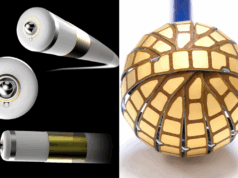More than 1,000 cardiac arrest deaths over 15 years are connected to the failure of automated external defibrillators (AEDs); battery failure accounted for almost one-quarter of the failures. The study titled “Analysis of Automated External Defibrillator Device Failures Reported to the Food and Drug Administration” was published online in the August issue of Annals of Emergency Medicine.
“Survival from cardiac arrest depends on the reliable operation of AEDs,” said lead study author Lawrence DeLuca, University of Arizona Department of Emergency Medicine in Tucson, USA. “AEDs can truly be lifesavers but only if they are in good working order and people are willing to use them.”
Researchers analysed reports to the Food and Drug Administration (FDA) about all adverse events connected to use of an AED between January 1993 and October 2008. Of the 40,787 AED-related events reported to the FDA, 1,150 adverse events connected to fatalities were reported. Almost half of failures occurred during the attempt to charge and deliver a recommended shock to the person in cardiac arrest.
Problems with pads and connectors accounted for 23.7% of the failures and battery power problems accounted for 23.2% of the failures.
Sudden cardiac arrest is a leading cause of death in North America and Europe. Odds of survival decline by 7 to 10% per minute of delay in defibrillation. Even as AEDs have proliferated in public places such as airports and offices, bystanders are reluctant to use them. An Annals of Emergency Medicine study published earlier this year found that less than half of people in public places reported being willing to use an AED and more than half were unable to recognise one.
“AEDs are like any other piece of medical equipment: They can experience unexpected failures,” said Deluca. “I would recommend that people maintain AEDs as recommended by the manufacturer. If an unexpected device failure occurs it is vitally important to promptly contact both the manufacturer and the FDA. Then be sure to return the unit (and accessories such as pads or batteries) to the manufacturer immediately so that it can be analysed and a cause for the failure identified and fixed.”









